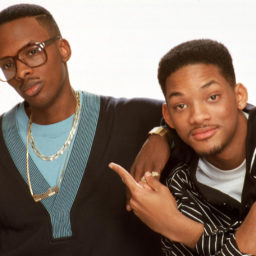Instagram Stories are the most important development in social media right now. I’ve previously explained why, but the key point is that the short format expiring content makes it fun to create, share, and engage with people who share their moments.
My two articles about Instagram Stories had loads of people getting in touch, following me, and sharing their own strategies. I’m also delighted that I inspired some to take the medium more seriously and get to work on it. In this article I want to go a little deeper to help you achieve more success through it.
Defining success on Instagram Stories
Everyone has their personal goals for social media. I do it just for fun, to keep friends engaged, and to keep my network connected by staying top of mind. I have varying reasons for posting individual story items, but there’s always a bigger picture.
Let’s define success by exploring what failure looks like.
Failure is when you post such low quality or inconsistent items that your audience stops caring. Maybe they mute your story to stop it from appearing at the top. Maybe they stop tapping your name, which causes Instagram to put you towards the end of the top bar. Being inconsistent, low quality, or plain boring will result in a loss of viewership over time.
So, this implies that success means you have a captive audience. An audience that checks in at least every 24 hours, over a long period of time.
Success metrics
- Time between sharing & viewing: do people check in once a day, or does a large proportion view your stories within the first hour of posting? The latter could imply stronger engagement.
- Average daily viewers: this should grow over time if you’re doing well. Could also check average viewers per story.
- Direct replies: are people responding and sending messages in response to your stories?
- Conversion: location-tagging and adding hashtags to stories exposes your stories to wider audiences — do they end up following you and becoming long-term viewers?
A general rule book for Instagram Stories
I don’t really like rules, but I see some typical behaviour that just doesn’t work, so I need to draw the line. It’s pretty easy to make good engaging content, and pretty easy to avoid making dull content. So let’s do this. 💪
- ‘Never’ repost stuff you’ve already posted as normal Instagram photos to Stories.
People will have seen it. Instagram Stories is not for old content. Stories is for fresh content. The other way around is fine: save your Stories to your camera roll, and then repost it as an Instagram post a day later. Not all your Instagram followers see your Stories, but nearly everyone who watches your Stories will also see your Instagram posts.
- Focus on keywords, not long texts.
Text should be no longer than maybe a sentence. If it’s a sentence, make sure to use good keywords, so people get what you’re saying in the blink of an eye without actually having to read it. People flick through stories fast, so if you’re posting any text longer than that you are posting useless content.
- Video > boomerang > static images.
In terms of what’s interesting content, video usually wins. It’s the most engaging, gives the most information, the most emotion. Uninspired boomerangs are pretty dull, so get creative. The reason why I put boomerangs at this step in the content hierarchy is because Instagram seems to favour them in Explore feeds when you’re location-tagging and hashtagging stuff.
- Tag your stories!
It gives another dimension to your stories, so people can check out the location, what else is in the hashtag, or the person you’re talking about… but it also exposes your content in the Explore tab. This can easily triple or quadruple any individual story item’s audience.
- Keep it personal & regular.
When you follow someone who regularly posts stuff, multiple times a day, you really get a feeling of connection. So that’s what you should be doing. Involve people in the part of your life that you don’t mind sharing. If you’re a musician or band, forget the same old shots of the audience at your gig or the “so excited about this new release” screenshots. Explain why you’re excited by talking into the camera, give people previews, take people backstage, show your journey towards a gig in the weeks leading up, and then on the day itself. Tell the story!
- Follow other people’s stories.
The easiest way to get Stories wrong is by not understanding what they’re for. Check other people’s stories at least once a day! Pay attention to what’s interesting and what’s boring to you. This is something that will change with more long-term engagement, so make it part of your daily media habit if you want to take this medium seriously.
- Get creative.
Repetitive content is what kills long-term engagement. So be creative.
20 creative ideas for Instagram Stories
I’m constantly thinking about what I can be posting, and drawing loads of inspiration from the people I follow. Here are my favourites.
Music
Music builds connection.
1. Take a video with music playing from your phone’s speakers. It captures the audio really well, and sometimes the best annotation for a view or moment is a song.
2. Take a screenshot of something that’s playing. Sounds dull, but if you’re posting a couple of items per day, it will blend in well. The screenshot makes sure people who have their audio disabled will understand what you’re sharing. A phone’s lock screen screenshot will also tell people things like the time of day, and whether you love living on the edge and riding that final 2-3% of your battery.
3. Take a video of a music video. I’ll get back to this further in the list, but sharing small clips by filming a YouTube clip on your laptop is surprisingly engaging… just make sure it’s interesting and not a video that everyone has already seen recently: unless for some reason the fact that you’re watching it is interesting or funny.
4. Use other music sharing apps. Some apps allow you to export small music clips, like Sounds, you can consider using them. But beware: super-polished content will feel like ads and is not very engaging.
Filters
Instagram has some basic photo filters you can use, which you can activate when taking a selfie (e.g. the virtual masks that stick to your face as you talk).
5. Get creative with filters. They’re there to make it easier to make fun or quirky content.
6. Use Snapchat filters, but post on Instagram. Snapchat has the best filters, and they regularly update them, adding new ones. You don’t have to post on Snapchat, just save the Snapchat Story to your device and then import it to Instagram.
7. Use filters in ways they weren’t intended. Faceswap with paintings, apply face filters to people on TV… get creative.
Surroundings
Your surroundings are more interesting than you may think… and there’s more waiting for you to find once you start looking for it. You should be documenting what you see and what piques your interest.
8. Street art and graffiti. Particularly stuff in original places.
9. Nature, grass, and parks. When people check Instagram Stories, they’re likely to be inside… so why not bring them outside? I personally really prefer film over static shots here, because you can capture wind, rain, animals, movement, and sound, and really share that special moment.
10. Going somewhere? Do a timelapse. The iPhone’s default camera app has a timelapse function, and if Android phones don’t have this, I’m sure there are apps for it. Hold your phone in front of your body while you’re walking and convert that 3 minute walk from the metro to the office into a 10 second clip.
11. Friends and people. Netflix founder Reed Hastings once answered that the most consistent thing they see in their data is that people really like stories about people. So bring some humanity into your stories and make it about more than yourself.
Pin text and emoji
If you put text or emoji into your stories, you can pin it to stay attached to a certain item in your video. You can have loads of fun with this.
12. Attach a surfer to the soap in your bath or sink. You can do this before taking a bath or doing the dishes. If you have some foamy soap, run your hand through the water and move it around while filming. Then attach emoji to the foam floating on the water.
13. Zoom in to pinned text. If you are doing a story with a lot of zooming, you can tag text to something you zoom in on. At the start of your story, the text may be barely noticeable until it’s fully zoomed in. Works with emoji too.
Use creative photography or video apps
Here’s two I like:
14. The Pantone app lets you tag certain colours. It’s a pretty nice way to highlight colours in your environment and share to Instagram.
15. Hyperspektiv lets you distort your reality. A very trippy app that lets you make interesting glitchy and psychedelic videos. Powerful, so you can spend hours inside the app, making all kinds of interesting content.
What are you doing?
Share what you’re doing.
16. Watching a music video.
17. Watching a documentary, TV show, or interesting movie.
18. Going to a concert or another type of public performance.
19. Flicking through an art book or going to a museum.
20. The fish tank in your local Chinese restaurant.
Just don’t overdo it: make sure content is not too similar.
21. Food? It’s a cliché, but if you’re able to take a good picture of your food, you can share it occasionally. But keep in mind that it’s usually not the food that’s important: it’s the moment. Involve people in your narrative. A plain beer is boring: a beer after a hard day of work is already more interesting. Capture the moment.
Hope this helps you up your content game. And if you’re wondering about how I’m doing it on Instagram (despite not necessarily being the best example), follow me: @basgras













